
- •Course of lectures «Contemporary Physics: Part2»
- •Einstein’s special theory of relativity when dealing with particle speeds comparable to the
- •As physicists sought new ways to solve these puzzles, another revolution took place
- •Blackbody Radiation and Planck’s Hypothesis
- •Blackbody Radiation and Planck’s Hypothesis
- •Blackbody Radiation and Planck’s Hypothesis
- •Blackbody Radiation and Planck’s Hypothesis
- •Blackbody Radiation and Planck’s Hypothesis
- •Blackbody Radiation and Planck’s Hypothesis
- •Blackbody Radiation and Planck’s Hypothesis
- •Blackbody Radiation and Planck’s Hypothesis
- •The Photoelectric Effect
- •The Photoelectric Effect
- •The Photoelectric Effect
- •The Photoelectric Effect
- •The Photoelectric Effect
- •The Compton Effect
- •The Compton Effect
- •The Compton Effect
- •The Nature of Electromagnetic Waves
- •The Nature of Electromagnetic Waves
- •The Wave Properties of Particles
- •The Wave Properties of Particles
- •The Wave Properties of Particles
- •The Wave Properties of Particles
- •The Wave Properties of Particles
- •The Wave Properties of Particles
- •A New Model: The Quantum Particle
- •A New Model: The Quantum Particle
- •A New Model: The Quantum Particle
- •A New Model: The Quantum Particle
- •A New Model: The Quantum Particle
- •A New Model: The Quantum Particle
- •A New Model: The Quantum Particle
- •The Double-Slit Experiment Revisited
- •The Double-Slit Experiment Revisited
- •The Uncertainty Principle
- •The Uncertainty Principle
- •The Uncertainty Principle

Course of lectures «Contemporary Physics: Part2»
Lecture №8
Introduction to Quantum Physics. Blackbody Radiation and Planck’s Hypothesis. The
Photoelectric Effect. The Compton Effect. The Nature of Electromagnetic Waves. The Wave Properties of Particles. A New Model: The Quantum Particle. The Double-Slit Experiment Revisited. The Uncertainty Principle.

Einstein’s special theory of relativity when dealing with particle speeds comparable to the speed of light. As the 20th century progressed, many experimental and theoretical problems were resolved by the special theory of relativity. For many other problems, however, neither relativity nor classical physics could provide a theoretical answer. Attempts to apply the laws of classical physics to explain the behavior of matter on the atomic scale were consistently unsuccessful. For example, the emission of discrete wavelengths of light from atoms in a hightemperature gas could not be explained within the framework of classical physics.

As physicists sought new ways to solve these puzzles, another revolution took place in physics between 1900 and 1930. A new theory called quantum mechanics was highly successful in explaining the behavior of particles of microscopic size. Like the special theory of relativity, the quantum theory requires a modification of our ideas concerning the physical world.
The first explanation of a phenomenon using quantum theory was introduced by Max Planck. Many subsequent mathematical developments and interpretations were made by a number of distinguished physicists, including Einstein, Bohr, de Broglie, Schrцdinger, and Heisenberg. Despite the great success of the quantum theory, Einstein frequently played the role of its critic, especially with regard to the manner in which the theory was interpreted.
Because an extensive study of quantum theory is beyond the scope of this book, this chapter is simply an introduction to its underlying principles.
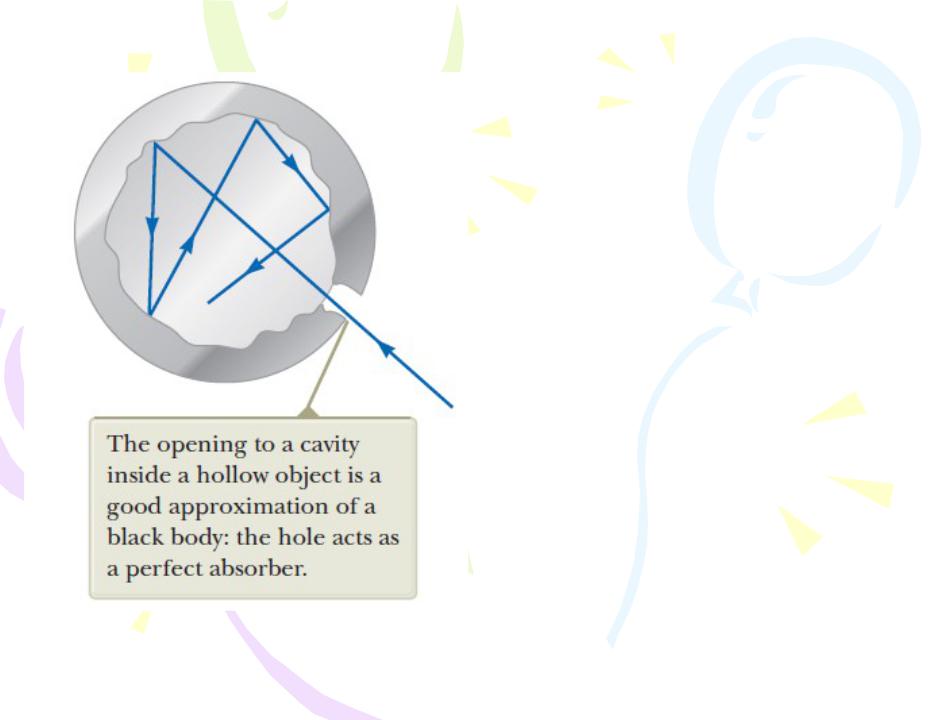
Blackbody Radiation and Planck’s Hypothesis
An object at any temperature emits electromagnetic waves in the form of thermal radiation from its surface.
A black body is an ideal system that absorbs all radiation incident on it. The electromagnetic radiation emitted by the black body is called blackbody radiation.
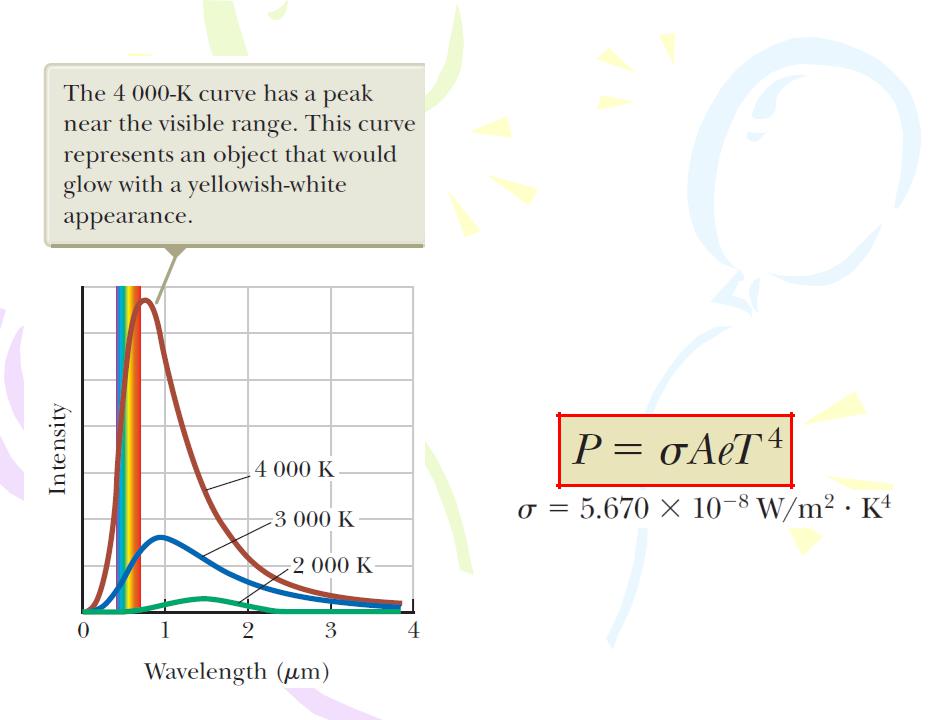
Blackbody Radiation and Planck’s Hypothesis
The following two consistent experimental findings were seen as especially significant how the intensity of blackbody radiation varies with temperature and
wavelength:
1. The total power of the emitted radiation increases with temperature. The Stefan’s law:
where P is the power in watts radiated at all wavelengths from the surface of an object, A is the surface area of the object in square meters, e is the emissivity of the surface, and T is the surface temperature in kelvins. For a black body, the emissivity is e=1 exactly.
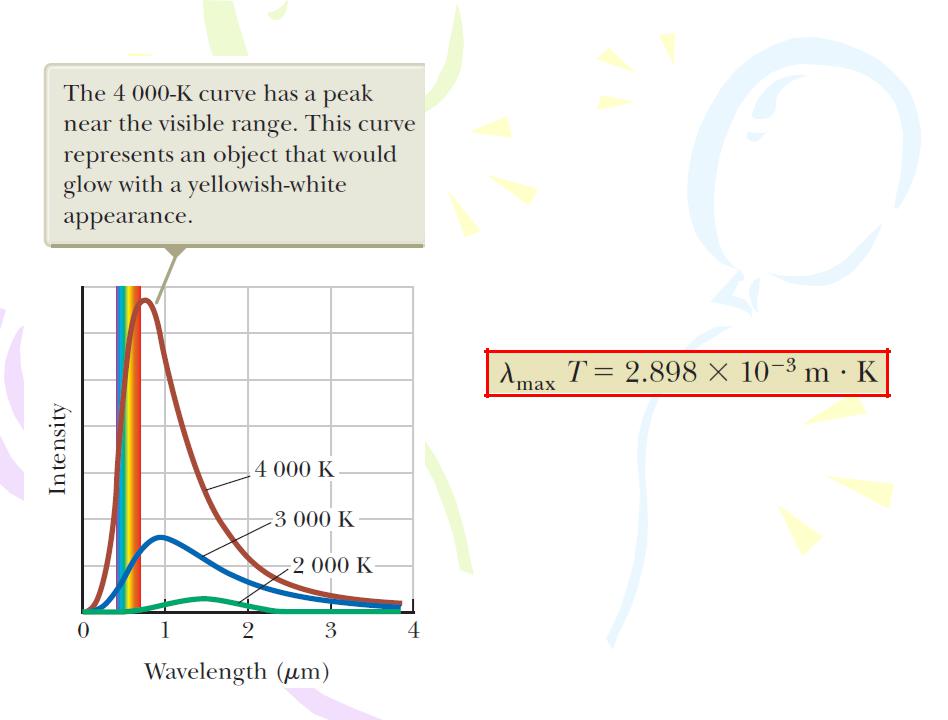
Blackbody Radiation and Planck’s Hypothesis
2. The peak of the wavelength distribution shifts to shorter wavelengths as the temperature increases. This behavior is described by the following relationship, called Wien’s displacement law:
Where λmax is the wavelength at which the
curve peaks and T is the absolute temperature of the surface of the object emitting the radiation. The wavelength at the curve’s peak is inversely proportional to the absolute temperature; that is, as the temperature increases, the peak is “displaced” to shorter wavelengths.
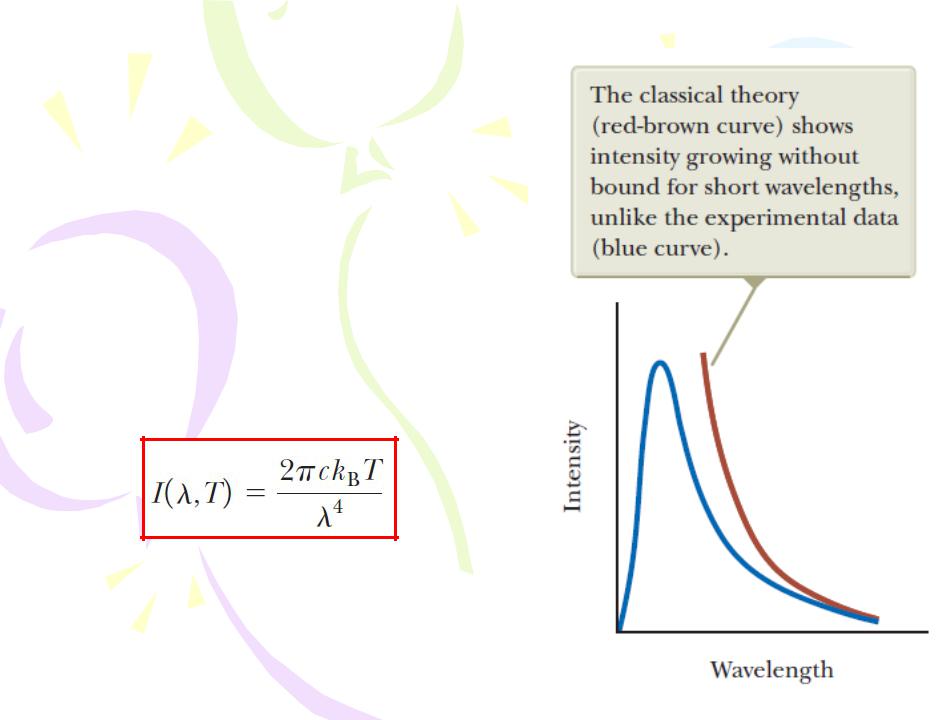
Blackbody Radiation and Planck’s Hypothesis
To describe the distribution of energy from a black body, we define I(λ,T)dl to be the intensity, or power per unit area, emitted in the wavelength interval dλ. The result of a calculation based on a classical theory of blackbody radiation known as the Rayleigh–
Jeans law is
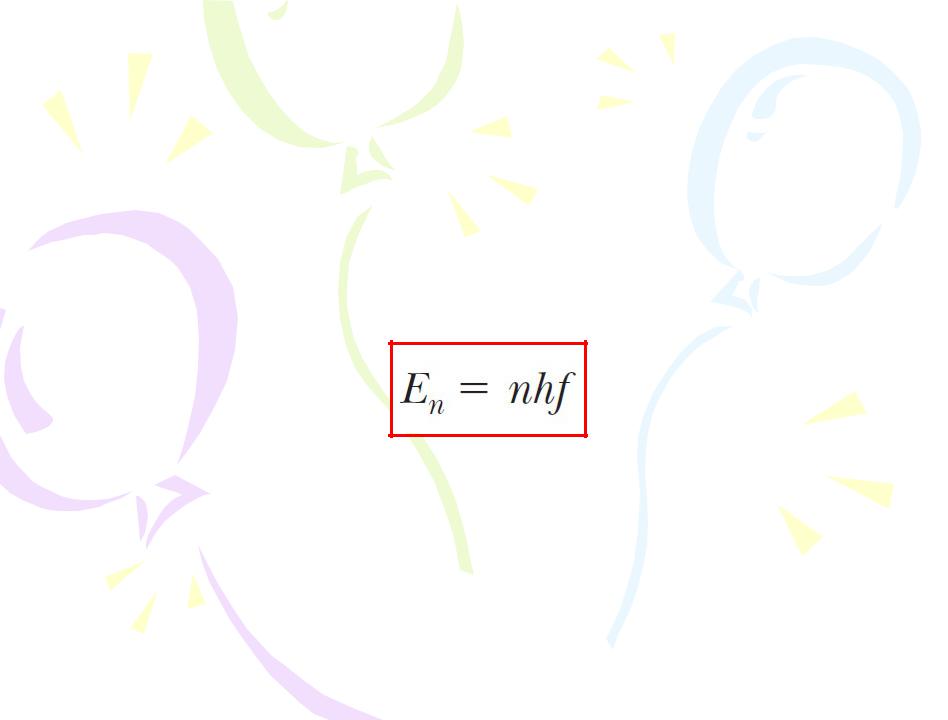
Blackbody Radiation and Planck’s Hypothesis
In 1900, Max Planck developed a theory of blackbody radiation that leads to an equation for I(λ,T) that is in complete agreement with experimental results at all wavelengths. Planck assumed the cavity radiation came from atomic oscillators in the cavity walls. Planck made two bold and controversial assumptions concerning the nature of the oscillators in the cavity walls:
• The energy of an oscillator can have only certain discrete values En:
Because the energy of each oscillator can have only discrete values, we say the energy is quantized. Each discrete energy value corresponds to a different quantum state, represented by the quantum number n. When the oscillator is in the n=1 quantum state, its energy is hf ; when it is in the n=2 quantum state, its energy is 2hf; and so on.
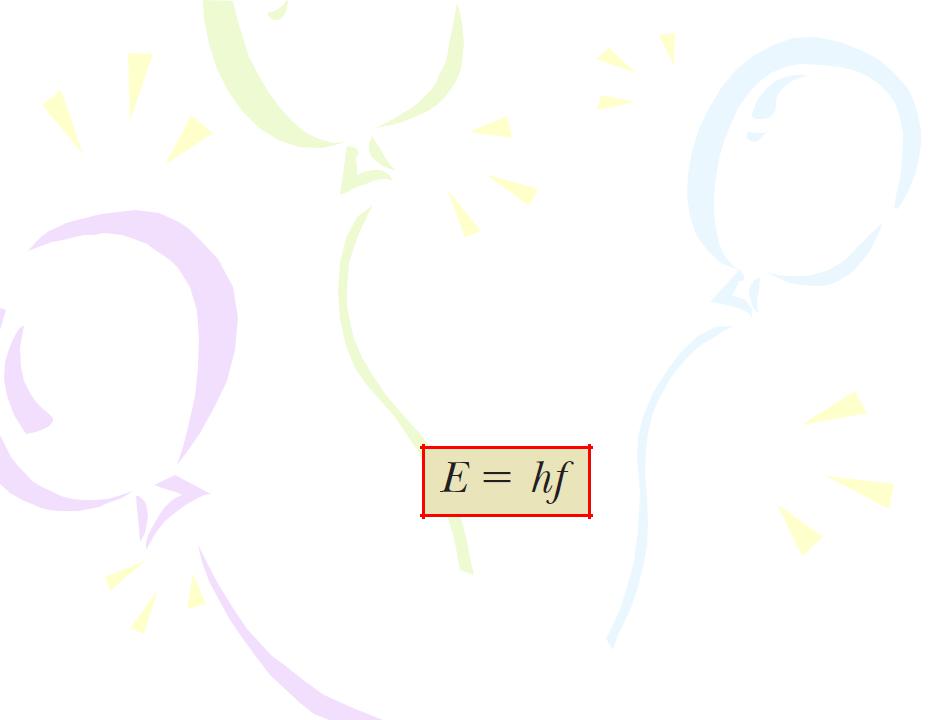
Blackbody Radiation and Planck’s Hypothesis
• The oscillators emit or absorb energy when making a transition from one quantum state to another. The entire energy difference between the initial and final states in the transition is emitted or absorbed as a single quantum of radiation. If the transition is from one state to a lower adjacent state—say, from the n=3 state to the n=2 state the amount of energy emitted by the oscillator and carried by the quantum of radiation is

Blackbody Radiation and Planck’s Hypothesis
An oscillator emits or absorbs energy only when it changes quantum states. If it remains in one quantum state, no energy is absorbed or emitted. Figure is an energy-level diagram showing the quantized energy levels and allowed transitions proposed by Planck.
